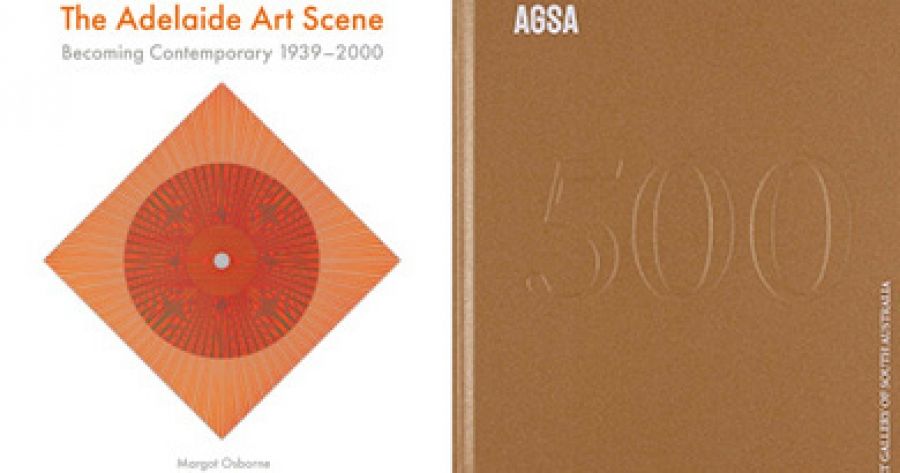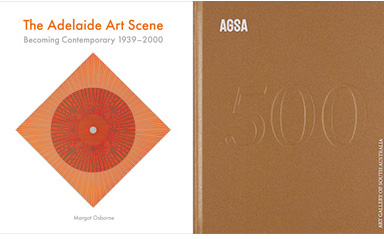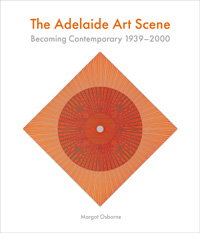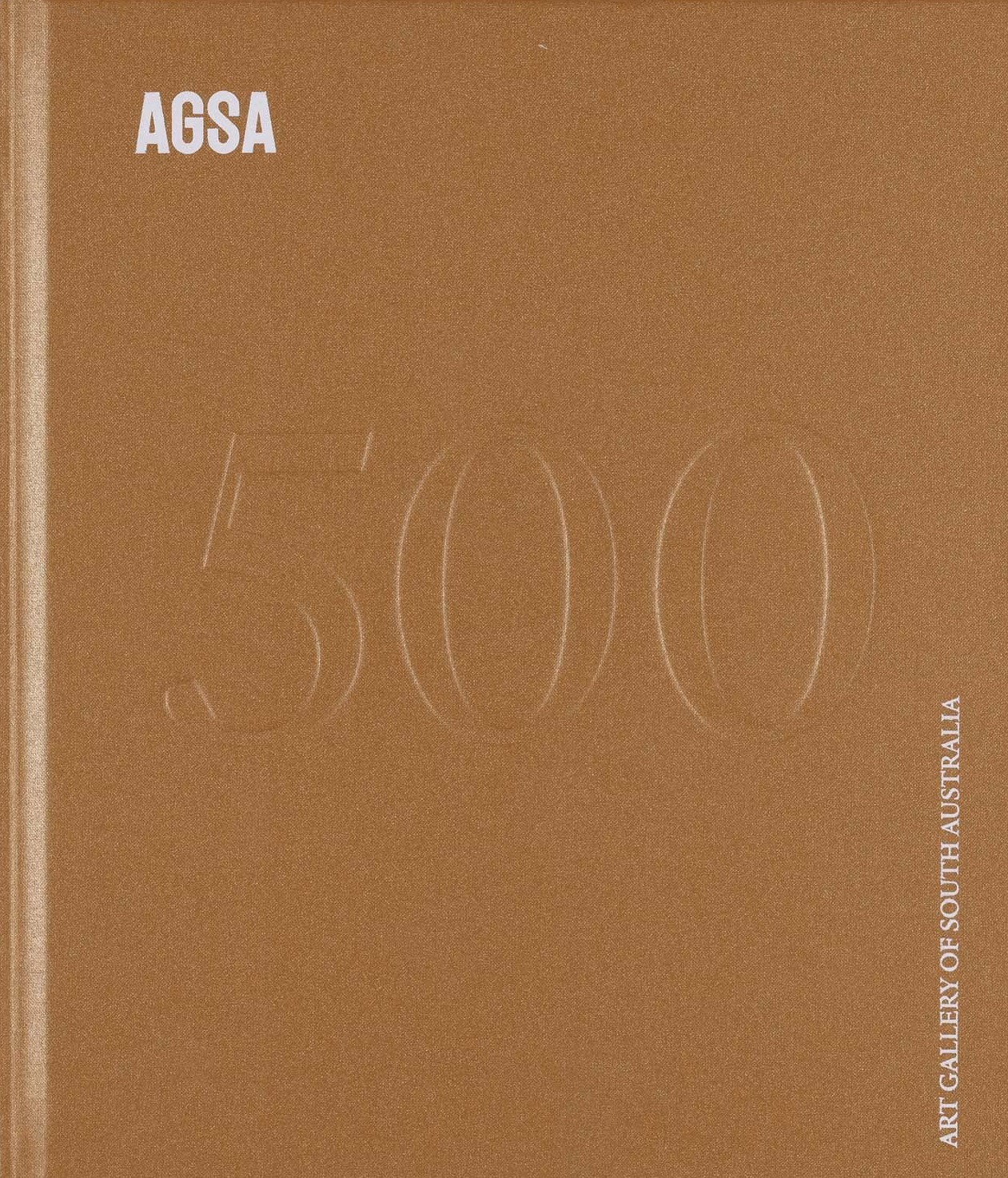
- Free Article: No
- Contents Category: Art
- Review Article: Yes
- Article Title: Artful Adelaide
- Article Subtitle: Two new reference books
- Online Only: No
- Custom Highlight Text:
Studies of ‘regional modernisms’ have frequently framed the non-metropolitan in strictly Northern Hemisphere terms, construing London or New York as centres of innovation, and cities and towns further afield – but still in the same country or region as those art-world capitals – as the belated adopters of phenomena that are often perceived as the province of metropolitan actors and audiences. Margot Osborne’s monumental volume The Adelaide Art Scene: Becoming contemporary 1939-2000 tells a far more complex story of modernism’s reach, impact, and legacies in twentieth-century art practice. In forensic detail, Osborne and her contributors explore the ways in which modernism’s significance was expressed in and affected a city that found itself both connected to and rival with Sydney and Melbourne, as well as with the established international centres. Whether through the training or travel of artists who called South Australia home at one point or another in their lives, Adelaide has been an important node in those movements for longer than many might imagine.
- Featured Image (400px * 250px):

- Alt Tag (Featured Image): Patrick Flanery reviews ‘The Adelaide Art Scene’ by Margot Osborne and ‘AGSA 500’ edited by Rhana Devenport
- Book 1 Title: The Adelaide Art Scene
- Book 1 Biblio: Wakefield Press, $120 hb, 743 pp
- Book 1 Cover Small (400 x 600):

- Book 1 Cover (800 x 1200):

- Book 2 Title: AGSA 500
- Book 2 Biblio: Art Gallery of South Australia, $69 hb, 543 pp
- Book 2 Cover Small (400 x 600):

- Book 2 Cover (800 x 1200):

Osborne is a compelling narrator for a story that is presented less as a coffee-table book than as a serious historical and scholarly volume with rich illustration that complements rather than supersedes the quality and clarity of the writing. There are, for those of us who are comparatively new to the city, genuine surprises. Osborne writes of the 1939 Exhibition of French and British Contemporary Art in Adelaide, ‘brought to Australia’ by Sir Keith Murdoch; featuring works by Cézanne, de Chirico, Dalí, Gauguin, Matisse, Picasso, and van Gogh, it offered ‘the first opportunity for the Adelaide public to view cubist and surrealist art’. While the attendance was modest compared to the show’s Melbourne iteration, Osborne contends that its ‘impact on the Adelaide artistic scene was both immediate and far-reaching’.
Among this book’s many strengths is telling a story that is as much about the visibility of international modernism in Adelaide as about local production. After an initial efflorescence of progressivism, Adelaide saw a mixed picture combining serious engagement with modernism and considerable public resistance to the avant-garde. Osborne notes that American modernism only arrived in Adelaide in the 1960s, for instance, despite the prevalence of Abstract Expressionism in New York from the 1940s. This sense of belatedness and mixed public reception is, of course, one facet of a complicated picture, and by no means unique to Adelaide.
Aspects of this struggle are evident in the Art Gallery of South Australia’s beautifully produced AGSA 500, a book comparable in size to Osborne’s volume but aimed at a very different audience. As Rhana Devenport, outgoing director of AGSA, writes in the introduction to this selection of five hundred of the Gallery’s works, AGSA has, since its establishment in 1881, grown to be ‘one of the largest and most significant’ art galleries in the nation. ‘With more than 47,000 works of art’, it is larger than important collections like the Norton Simon in Pasadena, California, though smaller than the National Gallery of Victoria. For its size, however, it does extraordinary work, aiming to be as representative as possible, particularly given the disproportionate modesty of its buildings and the absence of state support for acquisitions in the past decade. Thanks to patrons like Max Carter AO (who funded the production of this extravagant volume), there have been remarkable acquisitions in recent years, including works by Edvard Munch, Giorgio de Chirico, Jeffrey Smart, Chris Offili, Gilbert & George, and emerging video artist Ida Sophia.
The largest proportion of the book is rightly dedicated to the Gallery’s Australian collection, which ranges from Aboriginal art and objects to early colonial painting, furniture, significant works of modernist painting, design, photography, and contemporary work across media; each piece is accompanied by a text written by an AGSA curator or affiliate. The Gallery has, as Devenport attests, an ‘unrivalled’ collection of works by twentieth-century Australian women artists, including such notables as Dorrit Black, Grace Cossington Smith, and Clarice Beckett; complementing this is ‘the finest collection of British Post-Impressionism and early Modernism … outside the Tate’.
Devenport notes that in 1939 the Gallery ‘became the first Australian state art museum to acquire a work of art by an Aboriginal artist’, securing Albert Namatjira’s Illum-Baura (Haasts Bluff), Central Australia, made that very year, as the first in a collection of work by Aboriginal and Torres Strait Islander artists that now numbers more than 2,000 pieces. It is a pity, then, that there is not more evidence of important recent acquisitions in this area: Vincent Namatjira goes unrepresented, for example, and I had hoped to find Timo Hogan’s breathtaking painting Lake Baker (2021) or Kayleen Whiskey’s ludic Seven Sistas Sign (2021). Perhaps the comparatively recent acquisition of such works precluded their inclusion. There is at least Daniel Boyd’s magnificent Untitled (TBOMB), which combines a Seurat-inflected approach to group portraiture with the formal qualities of Aboriginal dot painting to produce a luminous depiction of a family picnic.
The Australian section of AGSA 500 includes a number of colonial works (still lives, landscapes, decorative objects) that, historical interest notwithstanding, might generously be described as unexceptional. Several nineteenth-century depictions of Indigenous Australians could have had more robust framing to explain the value of such works or to interrogate the offensiveness – in some cases – of their depictions. When an image like Eugene von Guérard’s Arcadian painting Stony Rises, Lake Corangamite (1857), with its depiction of ‘an Aboriginal camp’, is framed (for example) as referring ‘to our nation’s difficult history’, there might have been more forceful interrogation of the exoticist depictions of Aboriginal people in the image, and some explanation of the work’s representativeness.
In place of (or at least in addition to) such pieces, I would have preferred to see recent acquisitions of works by Karla Dickens, Karen Mills, or James Tylor, and a more thematic organisation would perhaps have given us a clearer picture of the strengths of the Gallery’s Australian holdings. That story is undoubtedly there in this beautiful book, but the reader must work to decipher it. The book’s other sections – on Asian and International art – do not face the same kinds of ideological issues, and both offer compelling narratives for the breadth, seriousness, and ongoing relevance of the collections in these areas.
In the end, AGSA 500 is an excellent coffee-table book rather than a scholarly one, notwithstanding Devenport’s lucid and uncompromisingly intelligent introduction and overview of the Gallery’s history. She reminds us that an art museum’s role is ‘to offer meaningful engagement rather than mere entertainment and to enrich and expand the ideas, emotions, sensations and memories that works of art can offer audiences’. Devenport celebrates AGSA’s ‘nuanced approach to the presentation of its collection’, noting that it juxtaposes ‘works that transcend the constraints of time, the divisions of nationhood and the hierarchies of artforms’ in an ‘asynchronous, transcultural and polymedia approach’. At its best, AGSA 500 reflects that spirit, even as one might have wished for the kind of narrative framing that Osborne’s volume so brilliantly offers. Together, however, these two books stand as essential monuments and guides to the ongoing ways in which Australia’s fifth-largest city continues to participate in, and offer an outsized contribution to, national and international flows of art and culture.


Comments powered by CComment